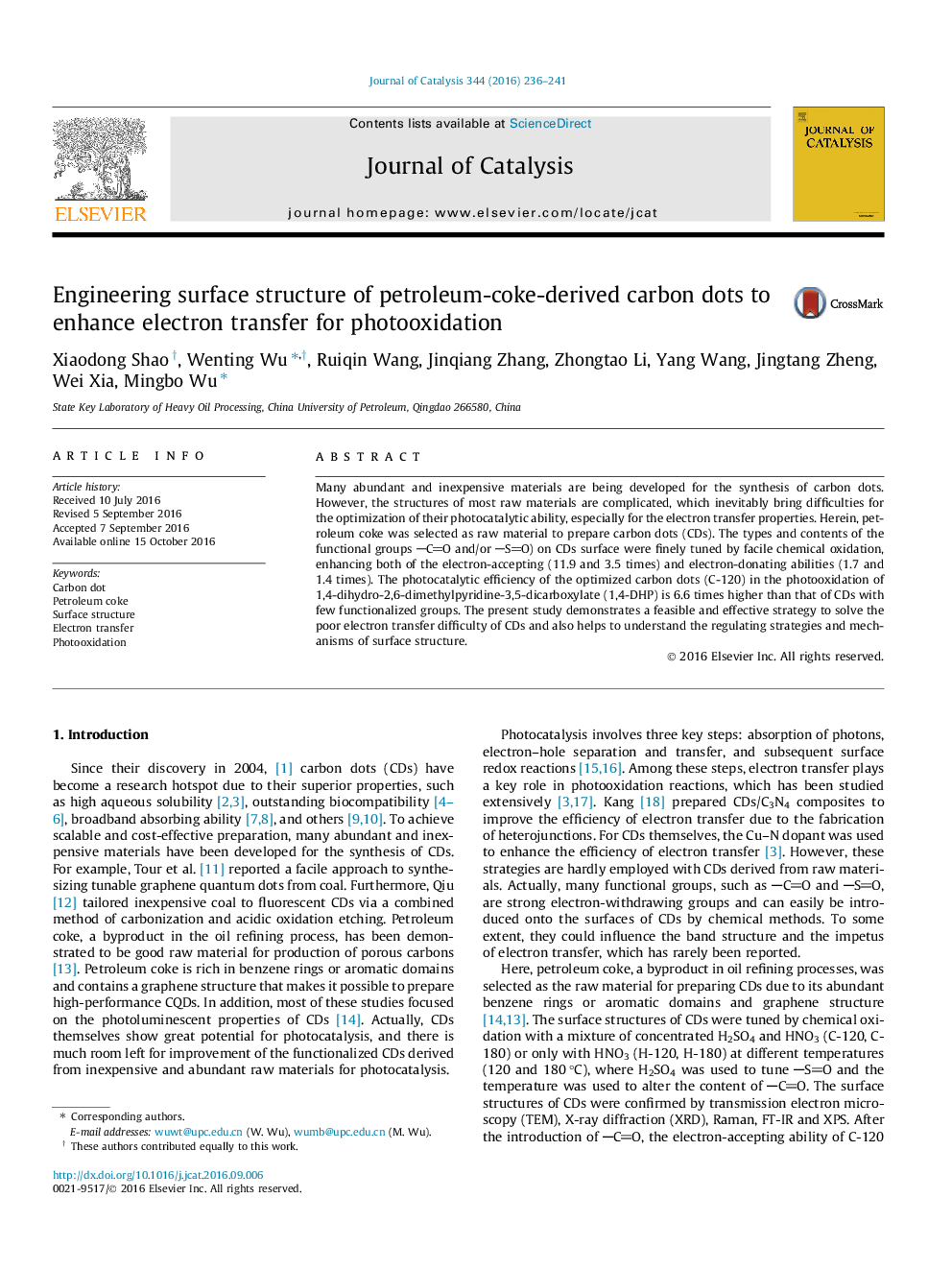| Article ID | Journal | Published Year | Pages | File Type |
|---|---|---|---|---|
| 6455790 | Journal of Catalysis | 2016 | 6 Pages |
â¢Modulating electron transfer properties of CDs by introducing distinct groups.â¢The mechanism of photooxidation 1,4-DHP by CDs was discussed and given.â¢Providing a reliable way to improve the electron transfer capacities of CDs.
Many abundant and inexpensive materials are being developed for the synthesis of carbon dots. However, the structures of most raw materials are complicated, which inevitably bring difficulties for the optimization of their photocatalytic ability, especially for the electron transfer properties. Herein, petroleum coke was selected as raw material to prepare carbon dots (CDs). The types and contents of the functional groups CO and/or SO) on CDs surface were finely tuned by facile chemical oxidation, enhancing both of the electron-accepting (11.9 and 3.5 times) and electron-donating abilities (1.7 and 1.4 times). The photocatalytic efficiency of the optimized carbon dots (C-120) in the photooxidation of 1,4-dihydro-2,6-dimethylpyridine-3,5-dicarboxylate (1,4-DHP) is 6.6 times higher than that of CDs with few functionalized groups. The present study demonstrates a feasible and effective strategy to solve the poor electron transfer difficulty of CDs and also helps to understand the regulating strategies and mechanisms of surface structure.
Graphical abstractDownload high-res image (85KB)Download full-size image
